How to make a thuja hedge?
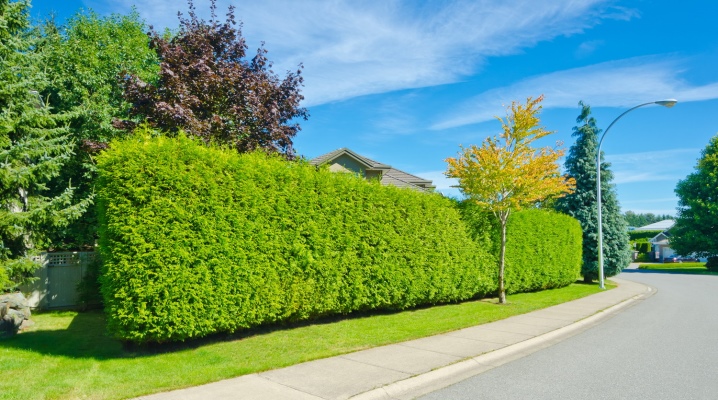
Evergreen fluffy thuja itself is a decoration of any garden. However, in addition to the aesthetic, it is also capable of performing the function of a fence, visually protecting the site from prying eyes.

Peculiarities
Thuja hedges are very often used in landscape design for many reasons. The green fence is completely unpretentious and does not require any special maintenance. It looks pretty versatile and fits seamlessly into any site design. The height of the trees can reach 20 m, which allows you to choose the most successful and comfortable appearance of the fence for the inhabitants. Moreover, it is possible to give the thuja an unusual head start: from an arch to a full-fledged sculpture.
Tuya is easily trimmed and goes without correction for quite a long time. By releasing phytoncides, it has a beneficial effect on the state of the air, and therefore on human health. A thuja fence not only hides the buildings and the site itself from the gaze of passers-by, but also detains the snow. The advantages include the ability to protect the area from dust and dirt, gases, wind and noise. Moreover, in a critical situation, a hedge can be a serious obstacle for people trying to enter the site with the aim of stealing.


What are the best varieties to use?
There are a sufficient number of varieties of thuja, but experts recommend choosing only some of them for collection. The varieties "brabant" and "smaragd" are most suitable for this purpose. Thuja "smaragd" is characterized by the ability to withstand low temperatures and strong gusts of wind, and it is quite easy to care for it. The height of one tree reaches 5-6 meters, and its crown resembles a cone in shape. The disadvantages of this variety include a rather slow development, due to which the hedge itself grows at a low rate.
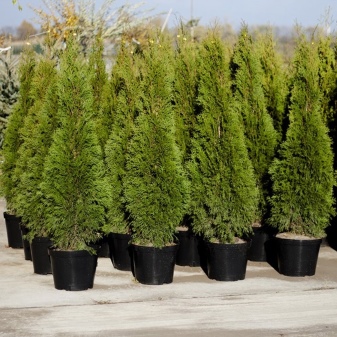
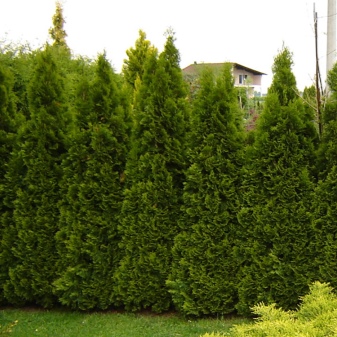
Thuja "brabant", on the contrary, refers to fast-growing plants, which explains its popularity. The tree is also resistant to the low temperatures inherent in the winter season. The undemanding plant grows about 30 cm each year. During planting, the seedlings are placed at intervals of one meter. From the moment of planting, it is enough to wait two years, and the height of the living fence will reach 4 m.
Regularly trimming the branches only adds to the density of the bushes. The disadvantages of the variety include the fact that "barbant" cannot remain green for 12 months. In winter, the color changes to red, and in spring the trees require additional care.
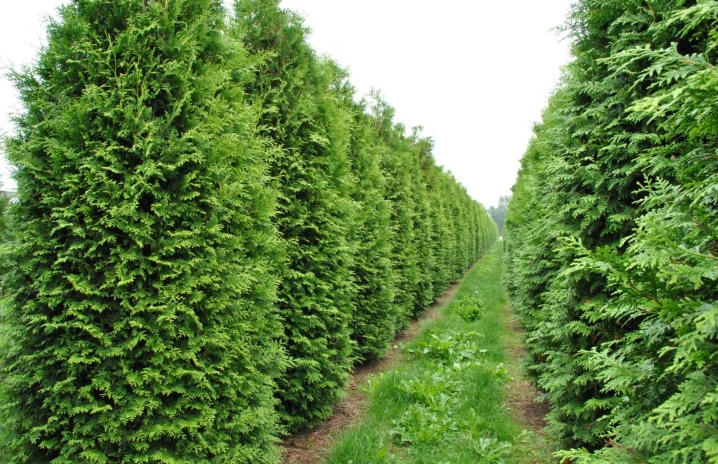
Besides, quite often a hedge is also formed from thuja varieties "Columna"... Like the previous varieties, it is characterized by excellent frost resistance, but in the summer it requires regular irrigation. The height of an individual tree sometimes reaches 7 m, while the diameter ranges from 1 to 1.5 m. The growth of the shrub is rather slow. The shape of the crown resembles a beautiful cone.
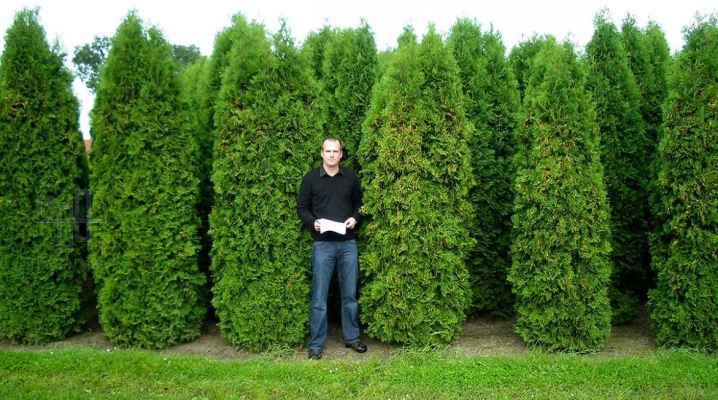
The fastigada variety, which has a dense crown and is the basis for exquisite compositions, is also found on the plots. The shape of the bush resembles a column, and the needles retain their rich green color even in the winter season.

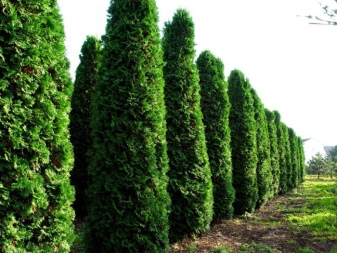
Variety of thuja "tributary" allows you to acquire bushes that initially have a rounded shape like a ball. The height of one tree does not exceed half a meter.Perhaps the main advantage of this variety is the absence of the need for any pruning, since the ideal shape is achieved even at the stage of the seedling.
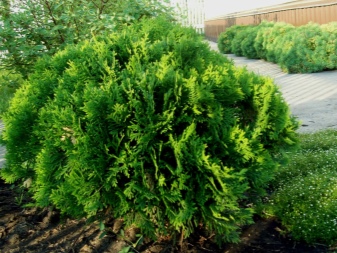
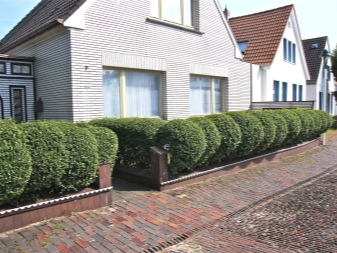
How to plant trees?
When choosing a place for planting a thuja, it should be borne in mind that the plant feels better in the shade or partial shade, but it will develop satisfactorily in the sun, provided that it is regularly watered. When organizing planting with your own hands, it is recommended to buy seedlings in the nursery to guarantee a pure variety that is not afraid of diseases and suitable for certain climatic conditions. Thuja can be propagated both by seedlings and by seeds or cuttings cut in the second half of spring. The first method is considered the best option, since the same seeds sometimes do not give the desired result. When making a purchase, it is important to inspect the roots and assess their integrity and healthy condition.
Seedlings should be taken those that have reached the age of four years - they not only have a lower price, but also take root quite well in a new place. If the choice is still in favor of seeds, but it is recommended to collect them in the fall from cones. Cuttings are planted in the first weeks of May.
If it was decided to plant a hedge around the house, then you should make sure that there is no groundwater in the selected places. You will have to maintain a distance of 1-2 meters between individual trees. It is recommended to drip 80 cm deep into each hole.
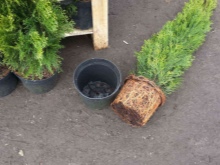
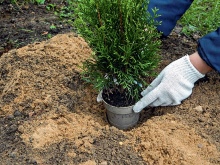
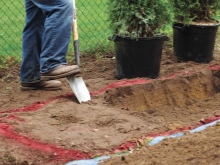
In the event that a hedge is formed near an existing fence, the width of the gap between individual trees can be reduced to 70 cm. The soil must first be enriched with mineral fertilizers. When placing the plant in the hole, you will have to make sure that the root collar remains on the surface line.
To be more precise, when planting one row of thujas, it is worth leaving 80 to 100 cm between them. When forming two rows of hedges, individual trees are placed in a checkerboard pattern, and the distance between individual specimens reaches 2 m. An overly large tree variety requires a distance of about 5 m between thujas.
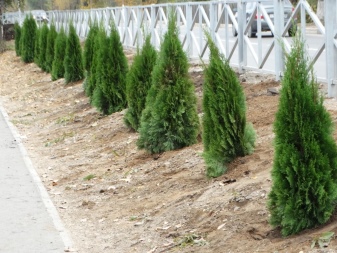
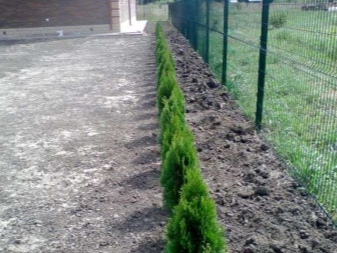
Care
As mentioned above, caring for a thuja hedge is not difficult. This will require completely ordinary items that every gardener has on the farm: a rake with a shovel, garden shears, water and fertilizers. The frequency of watering is determined depending on the condition of the land and how deep the groundwater is.
The best solution is to regularly check the condition of the soil. It is best to irrigate once a week with one standard bucket for each tree. If the season turns out to be dry, then watering will have to be made more frequent - two buckets need to be poured twice a week. It is customary to complete each watering with active loosening, which improves the process of oxygen supply to the root system.
For mulching the soil, either chips or peat are used. The procedure is not carried out immediately, but only one month after direct landing.
In the spring, every year the soil will have to be enriched with compost and mineral fertilizers. It is better to form a crown and remove aged branches in the fall. Young seedlings should be additionally protected from direct sunlight until they become resistant.

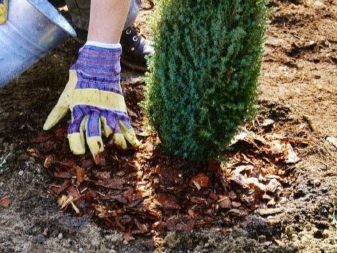
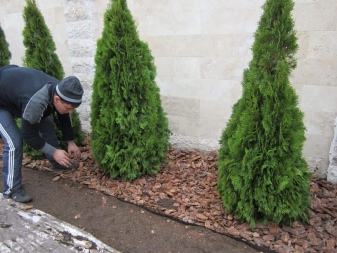
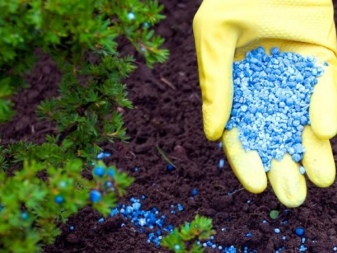
Immediately after planting, it is important to carefully care for the thuja, since the bush is still taking root. Additional protection may be required from all aggressive factors: dry weather, excessive humidity or sudden temperature fluctuations.
The first fertilizers are applied at planting - they should be enough for several years. After 2-3 years, thuja needs regular feeding. It is best to choose in the store those complexes that are designed specifically for thuja and are distributed on the surface by sprinkling. Natural fertilizers such as compost will also be beneficial.It is necessary to feed the hedge twice: in spring and in June, adding useful components in equal parts.
About 1 kg of fertilizers per 10 square meters is used per year. m of soil. If we talk about the composition of fertilizers, then preference should be given to magnesium, iron, potassium and phosphorus. The presence of the latter two components is especially important in the fall.
The transplant does not hurt the thuja much, but experts recommend doing this type of activity only in the spring or in the first weeks of summer. In the case when the shrub has already acquired root food, the transplant will have to be postponed for the summer or autumn.
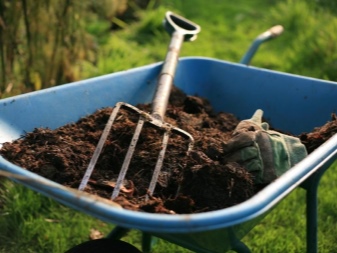
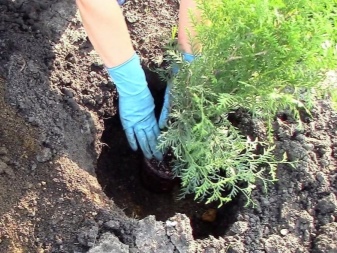
Thuja care in the winter season has its own specifics. The first winter can be especially difficult for bushes, as they can die without proper care. Already at the end of autumn, but before the frost arrives, each copy will need to be covered with a fairly dense fabric, which is easy to buy at a gardening store. The material chosen should retain heat, but trap the sun's rays. The improvised bag should be loosely put on so that there is free space between the bush and the fabric.
Thuja roots also require winter insulation. It is best to use foliage for this purpose, by that time naturally accumulated on the site. After mixing the leaves with earth, the resulting substance should be scattered around the bushes. Such winter care is necessary only for trees under three years old. After that, they will be so strong that they will be able to cope with low temperatures without any special action.
It is important that the thuja is not covered with snow, otherwise this will lead to the needles beginning to flutter. The use of snow for insulating wood in this case is categorically contraindicated.
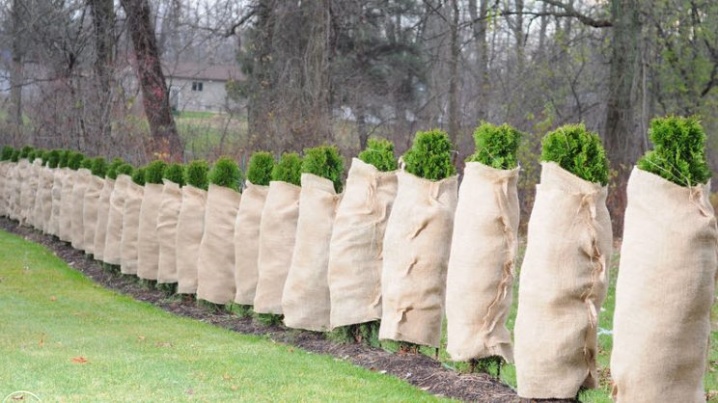
In the spring, you should not immediately remove the shelters from the bushes, as they can quickly burn out from the spring sun. First, you need to wait until the soil thaws, besides, you need constant positive temperatures and the absence of temperature jumps. If necessary, you can install special shields next to the thuja, which will create the required shadow.
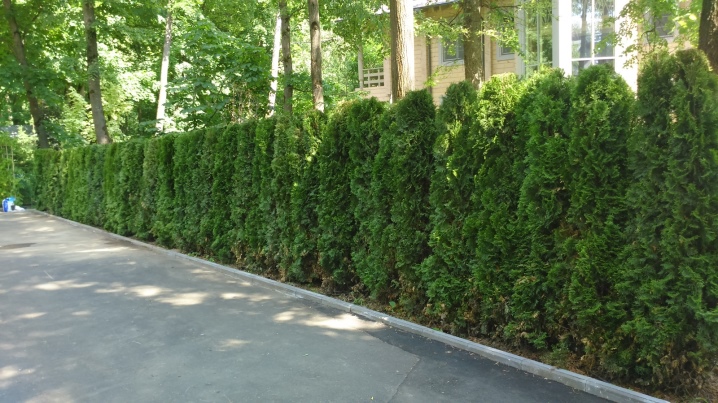
How to cut correctly?
Cutting a thuja hedge is carried out according to certain rules, which allow not only to form an attractive shape, but also to maintain the health of the plant. Pruning times may differ depending on the selected variety, so it is customary to check with the seller at the stage of buying seeds or seedlings. The main rule for cutting thuja is to cut a small number of branches at a time. No more than 30% of the total crown volume of the plant is removed, otherwise it will dry out. In no case should bare branches be provoked, since the green mass cannot be restored.
When choosing an unusual shape, it is important to adhere to the basic rule: branches should expand from top to bottom. The extra branches of the thuja are removed from spring to summer, depending on the weather. In the event that it is required to stop the growth of the bush in order to give it an unusual shape, the branches should be cut before bud break.
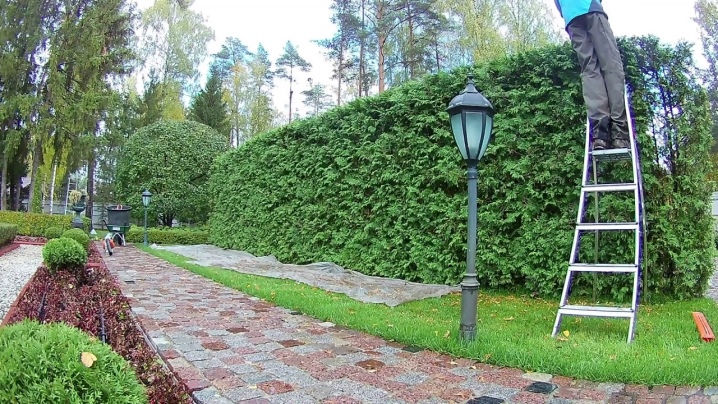
Conversely, when the plant needs to grow further, trimming occurs after flowering. For a straight cut, use regular power scissors or pruning shears. Tools must be sharpened and cleaned.
To give the hedge the desired shape, you need a special green mesh, consisting of large cells. It stretches over the entire green fence and is an indicator of the appearance of twigs, "knocked out" of the overall picture. As soon as the processes crawl through the cells, they must be cut off immediately.
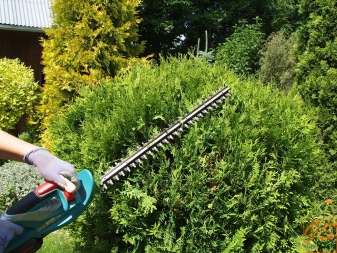
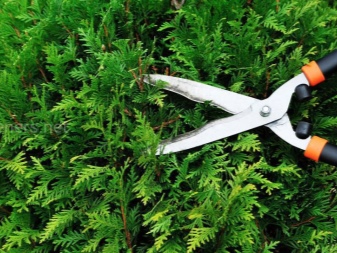
For information on which varieties to choose for a thuja hedge, see the next video.



































































The comment was sent successfully.